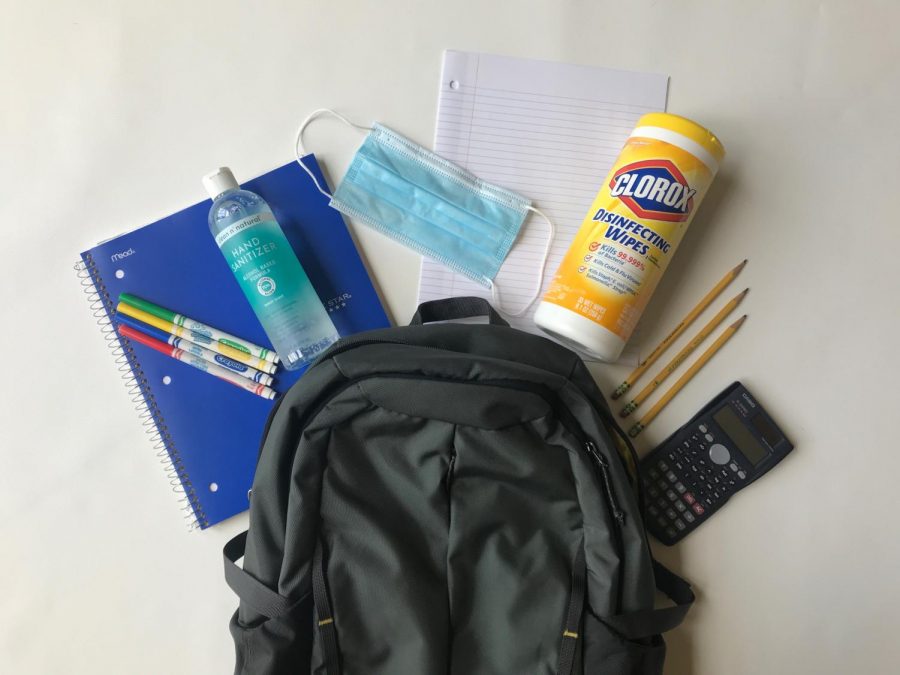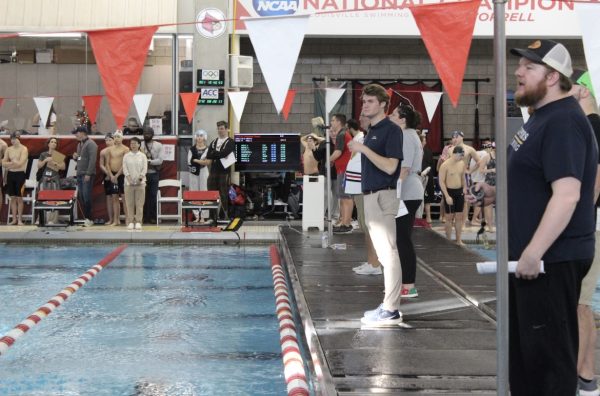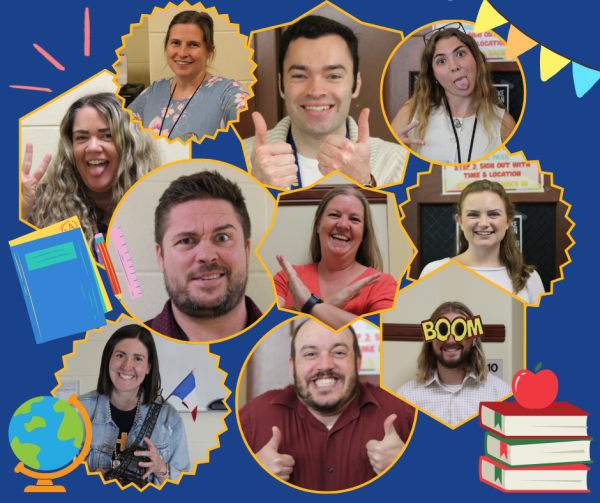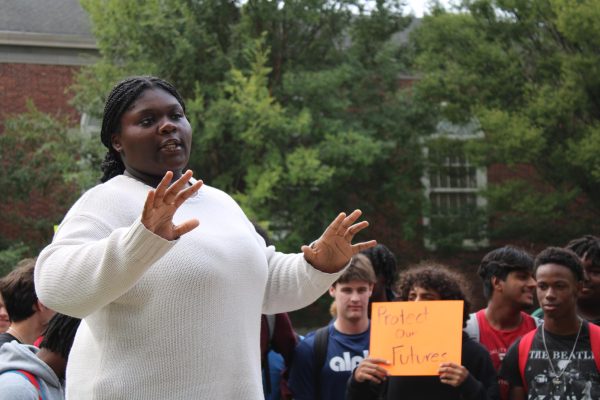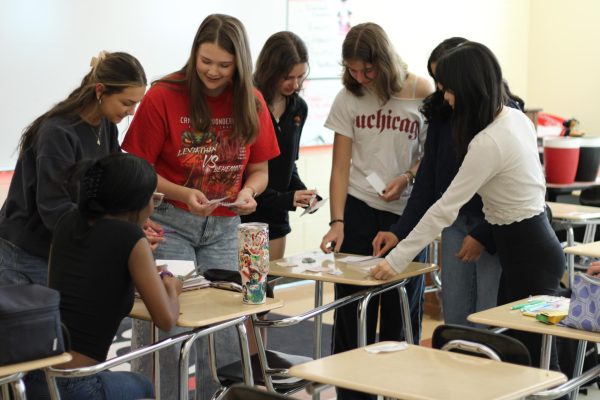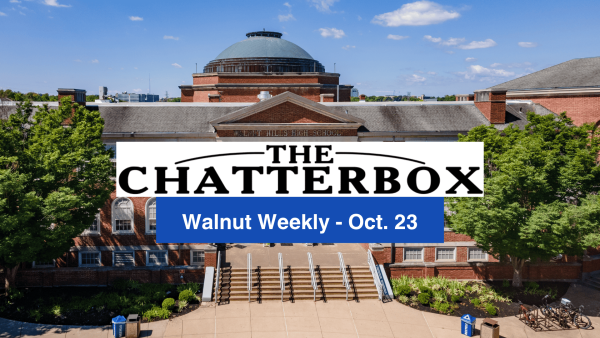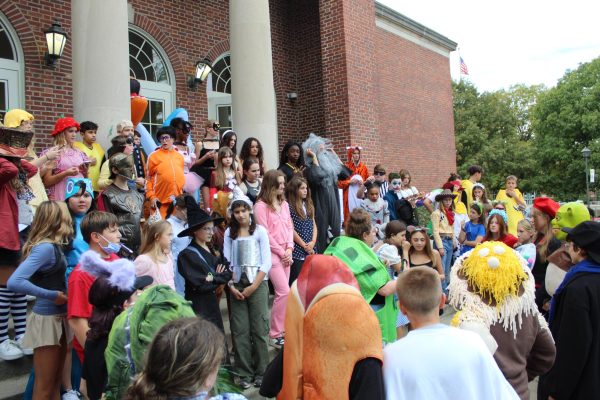WHHS teachers react to CPS reopening decision and plan for fall
On June 29, the CPS Board of Education voted to return to school this fall with a hybrid learning model. With the first day of school on August 24, some teachers have started planning for this new reality.
In the hybrid plan, students will be divided into groups A and B, with group A attending in-person school on Tuesday and Wednesday and group B on Thursday and Friday. The groups will alternate on Mondays. On days they do not attend in person, students will learn remotely. According to the board, this plan allows students to maintain six feet of social distancing, while all other options allowed for three feet.
However, with Hamilton County experiencing a spike in cases, the school board’s July 13 meeting brought up more doubts about the plan.
“Many teachers have started planning, but it’s currently a bit overwhelming because the news is ever-evolving,” English teacher Margo Fisher-Bellman said. She pointed out that, like the general public, teachers are watching school board meetings to get their information. “There never seems to be a firm resolution regarding what we are going to do. [The July 13] board meeting really emphasized the district’s reluctance to reopen at all,” she said.
Balancing safety and effective learning
Before the board announced its decision, computer science teacher Dr. William Gordon spoke at the June 29 board meeting to express his support for in-person learning five days a week.
“I am at high risk in at least two categories. I am over 65 and I have asthma,” Gordon said, “Based on the knowledge I have and the research I’ve done, I am comfortable in a three foot environment with students wearing masks. Based on my experience teaching with the students last year and past experience as a college teacher, remote learning is not very effective for the students because they get much of the value of their learning from interacting with other students. I strongly support the five day option.”
Gordon was not the only teacher who expressed troubles with online learning this spring. Fisher-Bellman said schoolwork necessarily became less important as some students got sick, dealt with sickness and unemployment in their families, and picked up essential work.
Technology also posed a problem for students with no devices, insufficient devices or simply less familiarity with computers. Some students faced the challenge of working or living somewhere other than their homes to access reliable internet for school.
“It was the most professionally challenging time of my teaching career,” Fisher-Bellman said.
CPS will address some of these issues in the fall by providing devices to all students, but no school board plan can remove the outside pressures of the pandemic for both students and staff. Some teachers have taken to social media and board meetings to express that they would not feel safe returning to school.
Latin teacher Barrett Smith was among many CPS teachers who spoke at the July 13 meeting. He told the board that he would normally prefer in-person instruction, but believed the risk is too great this year.
“How many sick students and staff are acceptable? How many hospitalizations are acceptable? How many dead students and staff are acceptable?” Smith said, “I worry that the board’s current discussions seem divorced from our reality. Hamilton County is currently experiencing a surge and out of control community spread… If we resume in-person instruction, there will be COVID positive students and staff, asymptomatic superspreaders, in our buildings from day one.”
Concerns about student and staff safety may be supported by a new South Korean study which found that children under 10 are less likely to transmit COVID-19 than adults, but children age 10 to 19 are just as likely as adults to transmit the virus. There is not yet conclusive research on exactly how school reopenings will affect transmission.
According to the CPS District Safety Plan for School Reopening, teachers will have some new responsibilities designed to reduce health risks. Teachers will encourage and reinforce the use of hand sanitizer, tissues and masks. They will schedule times for student handwashing as well as safe, socially distanced “mask breaks”. They may monitor hallways and bathrooms to prevent students from clustering. Teachers will also be provided with cleaning materials to sanitize desks when new students enter the classroom and before and after lunch, which students will eat at their desks.
CPS staff are under the additional pressure of expected layoffs, originally predicted to be several hundred. On July 15, superintendent Laura Mitchell said that CPS now plans to lay off a total of less than 50. CPS reduced this number in part by cutting vacant teaching positions.
What to expect in class this fall
As teachers navigate evolving plans from the district, some are starting to make their own plans and imagine what their classes may look like.
“The most common plan I hear is that teachers are planning as though we are 100 percent remote– but that’s not the only plan I hear. Many people are just too overwhelmed to even imagine what is going to be and are consequently frozen,” Fisher-Bellman said.
A current English teacher, Fisher-Bellman is supposed to transition to the WHHS library this year. She and the other librarians have spent their time this summer preparing digital materials. But with five weeks until school starts, she is still nervous that her new position may be cut, in which case she would need to quickly pivot back to teaching English.
According to Fisher-Bellman, English teachers have discussed concerns about pacing in their courses.
“The drafting, revision and proofreading process works so well when chunked into small bits and worked through daily– but when we meet inconsistently, that process gets stretched further and further out. I worry about consistency and engagement,” she said.
In his computer science and calculus courses, Gordon said students will likely have “much closer to a true college experience.” There may be one, or no, lecture each week, with more focus on problems, labs and discussion groups. He also plans to offer drop-in help sessions over video call in the late afternoon and evening.
“The ‘regular approach’ – whatever that is for every teacher– just won’t work this year. Everything has to change… but if we jump to the bright side, this provides a great opportunity to weed out the lessons or units that aren’t as strong and really hone the good stuff,” Fisher-Bellman said.
Advice for students
As WHHS embarks on a school year like none other, teachers encourage students to speak up and communicate with them as much as possible.
Gordon advises students to “be up front with their teachers about what they need and want, and what is or is not working for them.”
Fisher-Bellman hopes students will be kind to themselves and said her mantra for the year is “resilience.”
“Maybe if we focus on our individual resilience, we can realize what we are capable of and afford ourselves room to be self-compassionate,” she said, “When we are in the middle of devastation, it’s difficult to realize just how hard swimming through the muck is. Time provides us the perspective to see what we survived. Right now, we don’t have the luxury of that perspective– so we need to be as kind to ourselves as we can.”
Your donation will support the student journalists of Walnut Hills High School. Your contribution will allow us to purchase equipment, cover our annual website hosting, printing costs and offset competition and conferences fees for students.



